In October 1893 the Johns Hopkins University School of Medicine opened. It was the first graduate school of medicine in the United States and the first to admit women on equal terms as men.
The intention of the university trustees and president Daniel C. Gilman had been to have the school built and ready for operation by the time The Johns Hopkins Hospital opened in 1889. However, the income from Johns Hopkins’ 1873 endowment for the university had dwindled over time, limiting options for building the school. Gilman had begun to raise funds when Mary Elizabeth Garrett and her circle of progressive friends formed the Women’s Medical Fund and mounted a nation-wide campaign to raise donations and social awareness, requiring as a provision for receipt of their eventual donation that women be admitted as students, appointed to the faculty, and afforded the same opportunities as their male colleagues. They also required rigorous academic standards for admission. The Women’s Fund campaign finally prevailed after Garrett added a large sum from her personal fortune. The university accepted the donations of Garrett and the Women’s Medical Fund as well as the terms attached to the gift. Read More >
Records of The Johns Hopkins University School of Medicine
Records document the founding, governance, and executive leadership of the school from its inception to today. There are records pertaining to medical education, research, student life, as well as the school’s academic departments and laboratories, and publications.
- William H. Welch (1893-1898)
- William Osler (1898-1899)
- William H. Howell (1899-1911)
- J. Whitridge Williams (1911-1923)
- Lewis H. Weed (1923-1929)
- Alan M. Chesney (1929-1953)
- Philip Bard (1953-1957)
- Thomas B. Turner (1957-1968)
- David E. Rogers (1968-1971)
- Russell H. Morgan (1971-1975)
- Richard S. Ross (1975-1990)
- Michael E. Johns (1990-1996)
- Edward Miller (1997-2012)
- Paul B. Rothman (2012-Present)
- Anatomy
- Anesthesiology and Critical Care Medicine
- Art as Applied to Medicine
- Biological Chemistry
- Biomedical Engineering
- Biophysics and Biophysical Chemistry
- Cell Biology
- Dermatology
- Emergency Medicine
- Genetic Medicine/McKusick-Nathans Institute of Genetic Medicine
- Gynecology and Obstetrics
- Health Sciences Informatics
- History of Medicine
- Hunterian Laboratory
- Medicine
- Medicine, Division of Infectious Diseases
- Molecular and Comparative Pathobiology
- Molecular Biology and Genetics
- Neurology and Neurosurgery
- Neuroscience
- Oncology/The Sydney Kimmel Comprehensive Cancer Center
- Ophthalmology/Wilmer Eye Institute
- Orthopaedic Surgery
- Otolaryngology/Head and Neck Surgery
- Pathology
- Pediatrics/The Johns Hopkins Children’s Center
- Pharmacology and Experimental Therapeutics
- Pharmacology and Molecular Sciences
- Physical Medicine and Rehabilitation
- Physiology
- Plastic and Reconstructive Surgery
- Psychiatry and Behavioral Sciences
- Radiation Oncology and Molecular Sciences
- Radiology and Radiological Science
- Surgery
- Urology/James Buchanan Brady Urological Institute
